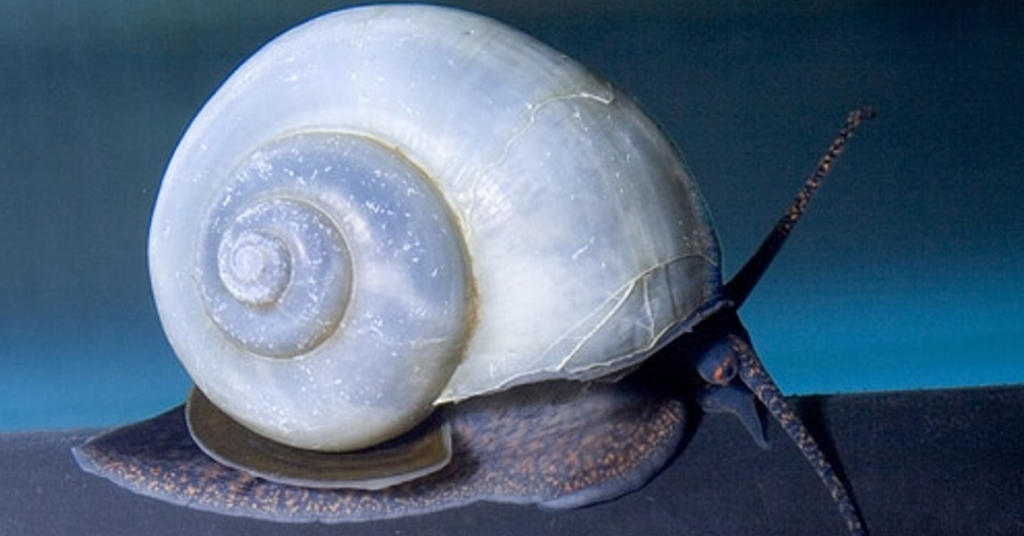
I love aquatic life; it’s not subtle. When I realized I wasn’t allowed to have a kitten (boo!) I made the decision to have an aquatic pet instead. So, I invested in a small but decently-sized tank and bought myself a mystery snail! I think mystery snails (also known as apple snails) are really interesting, so I’d like to share some information about them!
Mystery snails have these really pretty, spiral-shaped, coiled shells, which serve as their protective armor. The shell’s color can vary widely, ranging from earthy tones of brown and beige to vibrant shades of blue, gold, and even purple.
Beneath the shell is the snail’s soft body, featuring a pair of sensory tentacles, with one bearing their eyes, and the other functioning as olfactory organs. These tentacles help them navigate their surroundings and locate food sources. Additionally, mystery snails possess a siphon, which allows them to extract oxygen from the water, and a specialized foot for locomotion (when I first saw my snail’s siphon, I was quite confused, actually! No worries, it’s supposed to be there!).

One of the most interesting aspects of mystery snails is their feeding behavior. They are considered omnivores, meaning they consume both plant and animal matter. This ability to adapt makes them highly versatile in an array of aquarium setups.
While mystery snails can eat algae, they really don’t eat it that often. In fact, your snail will most likely starve if you leave it to just eat algae! Therefore, it’s important to supplement their diet with additional nutrition, such as sinking pellets or blanched vegetables like zucchini or spinach. Ensuring a well-rounded diet not only keeps them healthy but also encourages vibrant shell coloration and robust growth.

The reproductive process of mystery snails is certainly different from other snails. They are dioecious, meaning there are distinct male and females, unlike most other snails. To initiate mating, the male releases sperm into the water, which the female then uses to fertilize her eggs. The female then lays her eggs above the waterline, attaching them to surfaces like the aquarium glass or decorations.
What sets mystery snails apart is their distinctive clutch, which resembles a cluster of small, round orbs. These clutches can contain anywhere from a few dozen to several hundred eggs, depending on the individual. Over the course of two to three weeks, the eggs undergo a transformation, gradually changing from translucent to opaque.
Once fully developed, the tiny snails hatch! It’s very important to note that their population must be carefully managed to prevent overpopulation in the tank.

Contrary to their name, mystery snails are anything but mysterious when it comes to their behavior. They are known for their ability to climb and move around the tank. In fact, they will often climb and glide through the aquarium, and then “jump” off of the side of the tank.
Mystery snails are curious creatures, and they often explore their surroundings and interact with other tank mates. They are peaceful by nature, making them excellent companions for a wide range of fish and other aquatic organisms. However, it’s crucial to ensure that the tank’s water parameters are suitable for both the snails and other aquatic friends.

If all of this has made you interested in getting your own mystery snail, I say go for it! Make sure you do proper research, though, and treat your snail with the utmost care! Happy snailing!
Consider Sharing!
